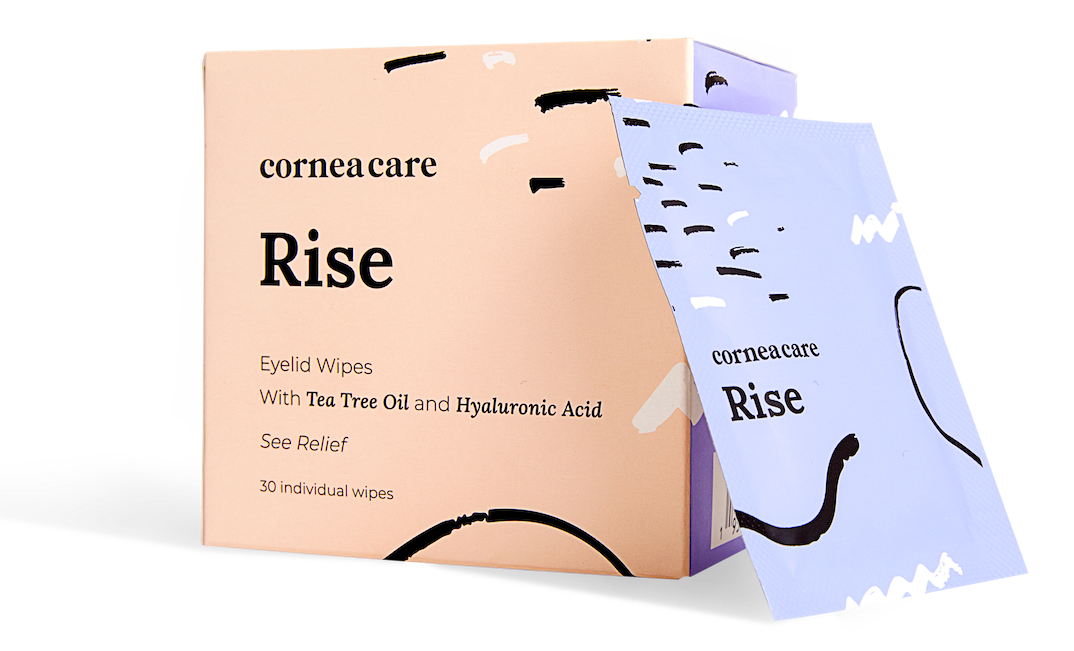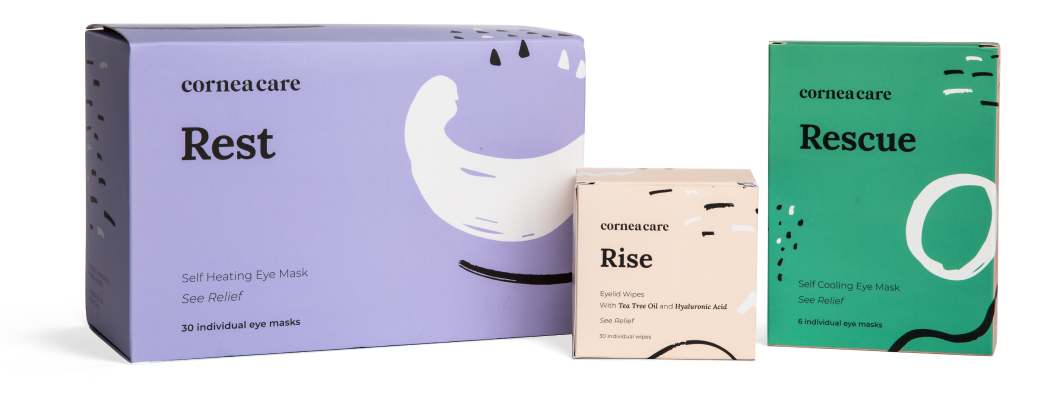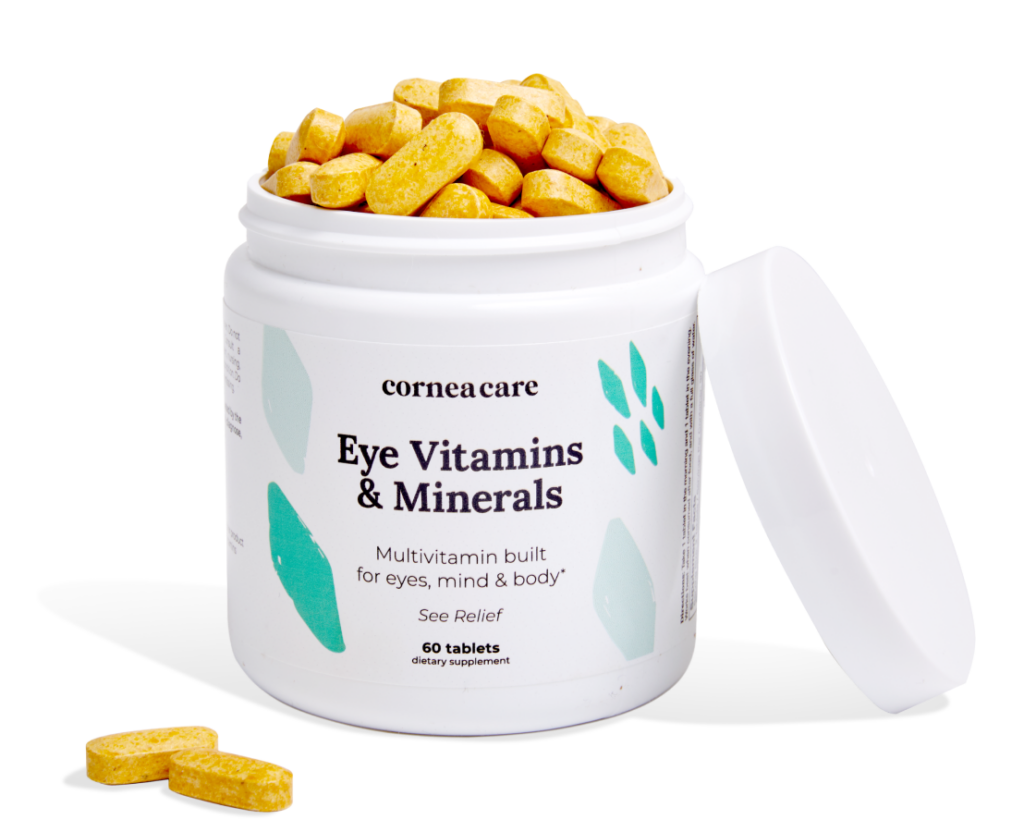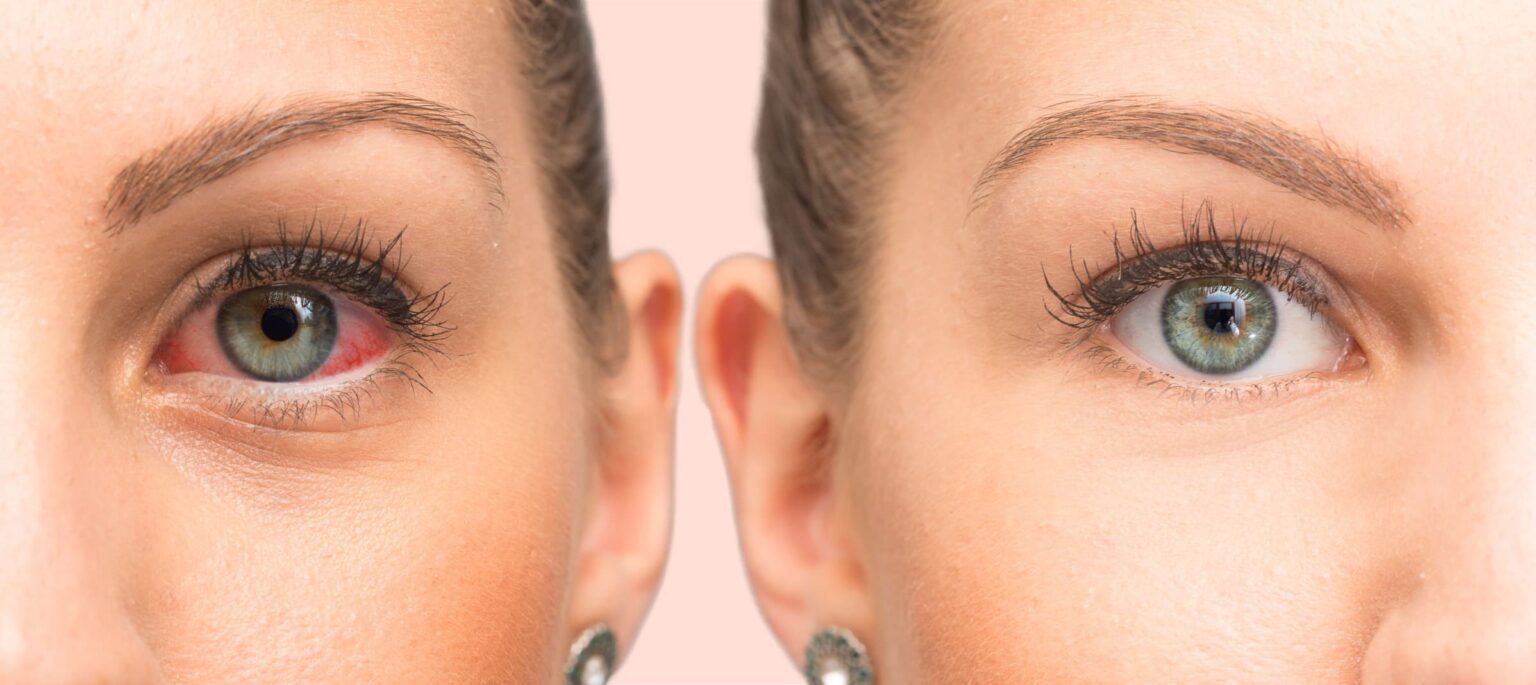How can you tell the difference between pink eye and dry eye?
Your eyes allow you to perceive the world around you and experience its beauty. However, like any part of your body, they are not immune to health issues. Eye problems can affect anyone, and two common eye conditions you may experience are pink eye and dry eye.
Distinguishing between the symptoms of pink eye and dry eye can be challenging since they share some of the same characteristics, such as the appearance of pink or red eyes. However, these two eye conditions are more different than alike. The only way to properly diagnose pink eye vs dry eye is with a visit to an eye care professional. We can help get you started on the road to recovery by helping you figure out which condition you most likely have and tips to take care of your eyes.
Let’s take a closer look at the differences between pink eye and dry eye, as well as their causes, symptoms, and effective solutions for a healthy and happy pair of eyes.
Key Points
- Accurate diagnosis of pink eye and dry eye, which share symptoms like redness, requires an eye care professional’s assessment.
- Pink eye, or conjunctivitis, can be bacterial, viral, or allergic. Bacterial pink eye leads to mucoid discharge, while viral pink eye often accompanies a cold.1
- Dry eye is caused by insufficient tear production or poor tear film quality, with symptoms including grittiness, burning, and excessive tearing.2
What is Pink Eye?
Pink eye, also known as conjunctivitis, is a condition that affects the conjunctiva, the thin, clear tissue covering the white part of your eye and the inner surface of your eyelids. It can occur due to various causes, including bacterial, viral, or allergic reactions.1
Types of Pink Eye
Bacterial conjunctivitis
Bacterial pink eye, also known as bacterial conjunctivitis, is a less frequent occurrence compared to its viral counterpart. Alongside the typical pink eye symptoms, bacterial conjunctivitis typically affects one eye, and may also cause crusting around the eyelashes or sticky yellowish discharge.1,3
This form of pink eye caused by a bacterial infection is highly contagious. If you have bacterial pink eye or are caring for a child with it, thorough handwashing is essential.1,3
Viral conjunctivitis
Viral pink eye, or viral conjunctivitis, is typically caused by the same viruses responsible for the common cold and may be accompanied by a runny nose or ear infection. It is the most common form of pink eye, and is also highly contagious, especially among children. Viral conjunctivitis can spread through respiratory droplets or touching contaminated surfaces.1,3
This viral infection often occurs in individuals with a recent cold or exposure to someone with a cold. Symptoms usually occur in both eyes, and include watery, red eyes, which typically resolve within a week or two.1,3
Allergic conjunctivitis
Allergic pink eye results from allergens like pollen, pet dander, or dust mites. It’s not contagious and usually affects both eyes simultaneously, and may be accompanied by systemic allergies, like itchy throat or runny nose.1,3

Rise
Eyelid Wipes
Perfect for eye dryness, itching, burning, and crusting/flaking of eyelashes. Free shipping 📦
Try today - $25
Symptoms of Pink Eye
The symptoms of pink eye can vary depending on the cause, but common signs include:3
- White of eyes appear red or pink
- Inflammation
- Itchiness and irritation
- Burning sensation
- Mucus or clear discharge
- Watery eyes
- Crusting of the eyelids
- May be accompanied by a runny nose and other signs of the common cold
Diagnosis and Treatment
Diagnosing pink eye involves a thorough examination by an eye care professional. It’s crucial to determine the type of pink eye to recommend appropriate treatment. In most cases:1,3
- Bacterial conjunctivitis is treated with antibiotic eye drops or ointment.
- Viral conjunctivitis is managed symptomatically, as there are no specific antiviral medications for it. CorneaCare cold compresses and artificial tears can help alleviate discomfort.
- Allergic pink eye is treated by identifying and avoiding allergens. Antihistamine eye drops or oral medications may also be prescribed. Certain over-the-counter allergy remedies can also help.
What is Dry Eye Disease?
Dry eye disease, also called dry eye syndrome, occurs when your eyes do not produce enough tears or the quality of your tear film is unstable. Several factors can lead to this condition.2
- Age can cause a natural decrease in tear production.
- Environmental exposure to dry or windy climates, air conditioning, and computer screens can exacerbate dry eye symptoms.
- Medical conditions like Sjögren’s syndrome, rheumatoid arthritis, or diabetes can contribute to dry eye.
- Side effects of certain medications, including those for the treatment of high blood pressure, depression, and glaucoma.
Symptoms of Dry Eye
The symptoms of dry eye may include:2
- Gritty feeling
- Feeling that something is in your eye
- Stinging or burning sensation
- Excessive tearing (paradoxical dryness)
- Light sensitivity
- Discomfort while wearing contacts
Diagnosis and Treatment
Diagnosis of dry eye involves a comprehensive eye examination. Treatment options depend on the severity of the condition:2
- Practicing eyelid hygiene consistently, including the use of CorneaCare eyelid wipes, warm compresses, and cold compresses, as needed.
- Preservative-free artificial tears provide relief by adding moisture to the eyes.
- Healthy lifestyle changes include staying hydrated, eating well, and filling nutritional gaps in your diet with CorneaCare eye vitamins and omega-3 supplements.
- Environmental adjustments such as using a humidifier, taking breaks from screens, and avoiding exposure to dry or windy conditions.
- Prescription medications and advanced treatments, such as punctal plugs to block tear drainage, may be recommended in severe cases.

All Rounder
Eyelid Hygiene Plan 3
Perfect for eye dryness, burning, itching, grittiness, crusting/flaking of eyelashes and inflamed/swollen eyelids. Free shipping 📦.
Try today - $60
Pink Eye vs Dry Eye: Key Differences
Pink eye and dry eye share some symptoms, such as eye redness and irritation. This overlap in symptoms can lead to confusion, emphasizing the importance of consulting an eye doctor (optometrist or ophthalmologist) for an accurate diagnosis.
Now that we’ve explored both conditions, let’s highlight the key differences between pink eye and dry eye:
- Pink eye primarily causes redness, itching, and discharge, while dry eye leads to sensations of dryness, burning, and excessive tearing.2,3
- The causes of pink eye include bacteria, viruses, or allergens, whereas dry eye is associated with aging, environmental factors, and underlying medical conditions.2,3
- Proper diagnosis is crucial because treatments for pink eye and dry eye differ significantly.
Pink Eye vs Dry Eye: How They Impact Your Eyes
In cases of dry eye, prolonged moisture deficiency can lead to inflammation of the surface of the eye. This can result in sensations of stinging or burning, often accompanied by feelings of eye fatigue or the sensation of a foreign body, like a grain of sand, lodged in the eye. These ongoing symptoms can impact your quality of life.4
Mild instances of dry eye typically don’t lead to significant complications. However, in cases of severe or persistent dry eye disease, there is a risk of scratches or scarring of the cornea. You are also at increased risk of developing corneal infections.4
With pink eye, inflammation of blood vessels in the conjunctiva results from infection or swelling. With treatment, pink eye commonly resolves after one to two weeks.1 In most scenarios, there are no enduring complications. Nevertheless, it is crucial to follow up with your doctor if the condition persists beyond the expected timeframe to ensure no damage to the inner eye has occurred.

Multivitamin
Eye Vitamins & Minerals
A single multivitamin to address the nutritional needs of your eyes, mind and body. 📦 Free shipping.
Try today - $35
How to Prevent Pink Eye and Dry Eye
Preventing eye problems is essential for maintaining healthy vision. Here are some strategies to protect your eyes:
- Wash your hands regularly to reduce the risk of eye infection and its spread.1
- Avoid touching your eyes to limit the exposure to irritants and allergens.1
- Protect your eyes from harsh environmental conditions by wearing sunglasses to shield your eyes from UV rays and wind.4
- Proper hydration helps maintain tear production and keeps your eyes healthy.4
- Take regular screen time breaks with the 20-20-20: take a 20-second break every 20 minutes and look at something 20 feet away.5
- Contact lens wearers should be careful to follow care and cleansing instructions and consider switching to glasses until symptoms clear.1,2
When to See Your Eye Doctor
If you experience a decline in your vision or endure eye pain, seek medical attention promptly. Visit your eye doctor for an eye exam if:
- Pink eye fails to show improvement within 2 to 3 days of medication use or after a week if left untreated.6
- Eye swelling or tenderness intensifies and is accompanied by systemic signs of infection, such as fever.6
- You’re experiencing frequent red, irritated eyes that feel sore or painful.4
- You have recently incurred an eye injury or scratched your eye.
- You’re experiencing blurry vision, worsening pain, or increased light sensitivity.6
- Annually if you have eye conditions that require management or you’re over the age of 65, and at least every two years otherwise.
Pink Eye vs Dry Eye FAQ
Common symptoms of pink eye can include a gritty feeling in the eye and itching. Frequently, a clear or yellowish discharge may develop, forming a crust on the eyelashes overnight. Pink eye is characterized by inflammation of the transparent membrane that covers both the eyelid and the eyeball.1
Conditions that may be mistaken as pink eye include dry eyes, styes, corneal infections, iritis, keratitis, and blepharitis. To accurately pinpoint the cause of your symptoms and receive appropriate treatment, schedule an eye exam with your eye doctor.7
Dry eyes can exhibit symptoms similar to pink eye, including redness, grittiness and eye irritation. However, a proper diagnosis from an eye care professional is necessary to differentiate between the two conditions accurately.2
Putting It All Together
There are similarities that can make it challenging to know the difference between pink eye vs dry eye. Understanding how they differ in cause and symptoms is vital for proper diagnosis and treatment. Whether you’re dealing with the redness and discharge of pink eye or the persistent discomfort of dry eye, seeking professional guidance is essential for maintaining your eye health. Remember, your eyes are precious, and with the right care and knowledge, you can enjoy a lifetime of clear vision.
What’s Next
To learn more about pink eye, read Allergy Eyes vs Pink Eye: Know the Difference, Pink Eye vs. Stye: Key Differences, and Can you get Pink Eye from a Fart?
To learn more about dry eye disease, check out our free Dry Eye 101 course!



